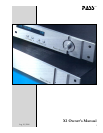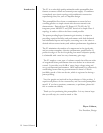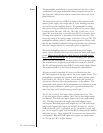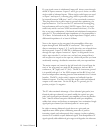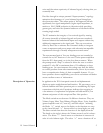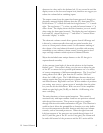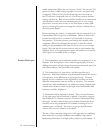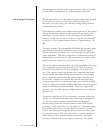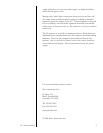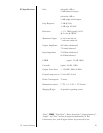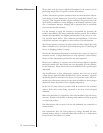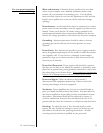
6
X1 Owner’s Manual
decreases its value; and is also balance left. If any control is used the
display reverts to the last saved output level, therefore we suggest you
reduce the volume before switching inputs.
The remote control uses the same four-button protocol, though it is
physically arranged slightly different than the X1’s front panel. The
far left button “<” is mode left and the far right button “>” is mode
right. The top button “^” is select up, and the bottom button “v” is
select down. The display shows the active function, just as it would
when using the front panel controls. The display has two brightness
levels and off, selected by the up “^” and down “v” buttons when
the mode “display” is visible.
The electronic volume control allows greater than 60 dB range and
is driven by a microcontroller that reads an optical encoder that
serves as a front panel volume control. In this manner tracking of
the volume of the two balanced channels is possible with accuracy
unavailable on any ordinary volume control, assuring precise level
steps and high common mode rejection in balanced circuits.
Wayne has included some unique features on the X1 that give it
unprecedented versatility.
At the extreme virtual right of the mode selection is the function
labeled “gain”. This control allows you, the user to adjust the gain
of the X1 to extract the best possible performance out of a variety
of source components of different manufacturers. The “Low Gain”
setting allows for 4 dB of gain from the X1 and the “Hi Gain”
allows for 14 dB of gain. The 10 dB difference between these two
settings require that you pay attention to volume as you switch back
and forth between High and Low Gain. With a number of products
one setting may convey a greater sense of musicality than the other.
Let your ears be the final arbiter. With our own X series amplifiers
which are quite high gain (30 dB), we find the +4 dB setting to be
most satisfying.
The unity function too bears special attention. This control is
associated only with input number 4 and has two positions selected
with the up/down arrows. The up arrow toggles to a straight-
through function with neither attenuation nor gain. This function is
useful in that it allows the preamplifier to function as a unity buffer
for use with components that best function with their own volume
controls, such as surround processors. When the right-front and
left-front outputs of the processor are routed through input 4 of
the X1 (with the gain of the X1 set for Unity gain), the volume will
be under full control of the processor and the X1’s action will be



